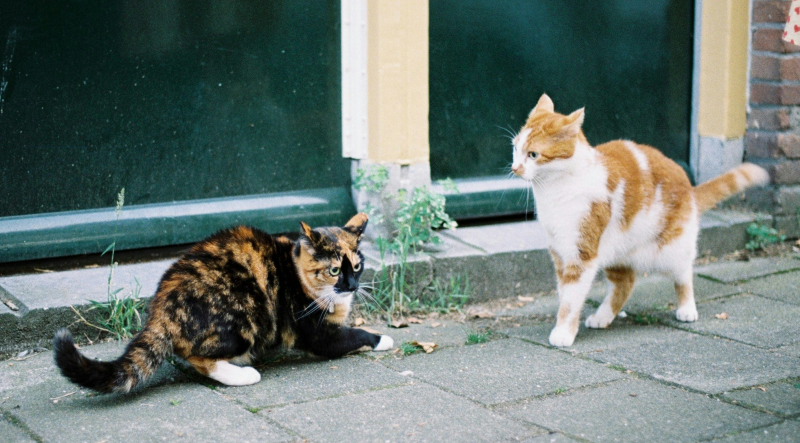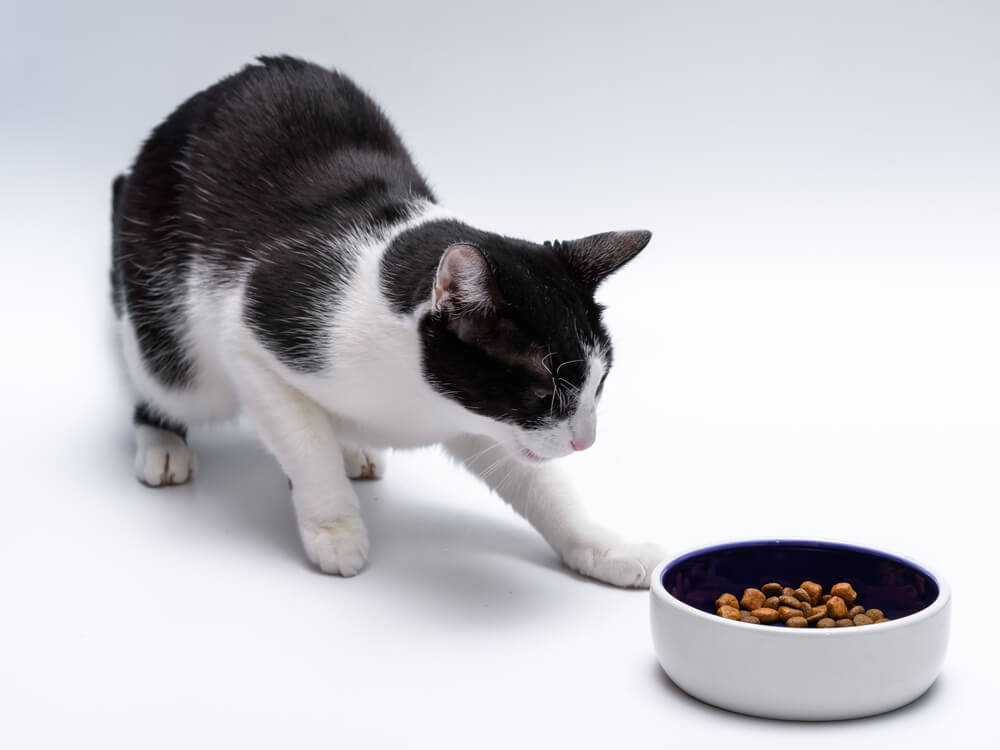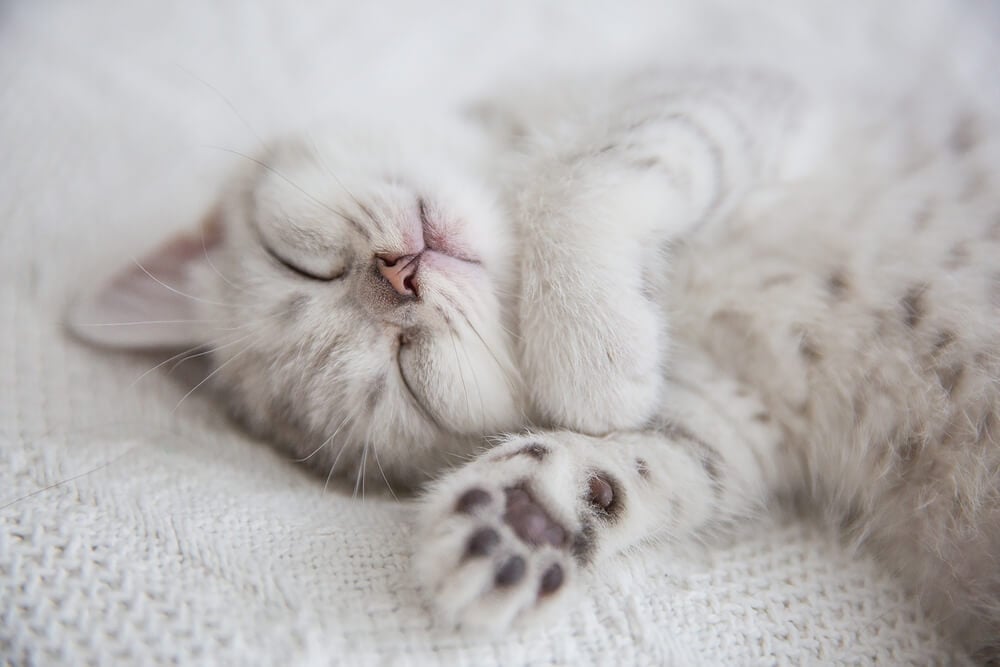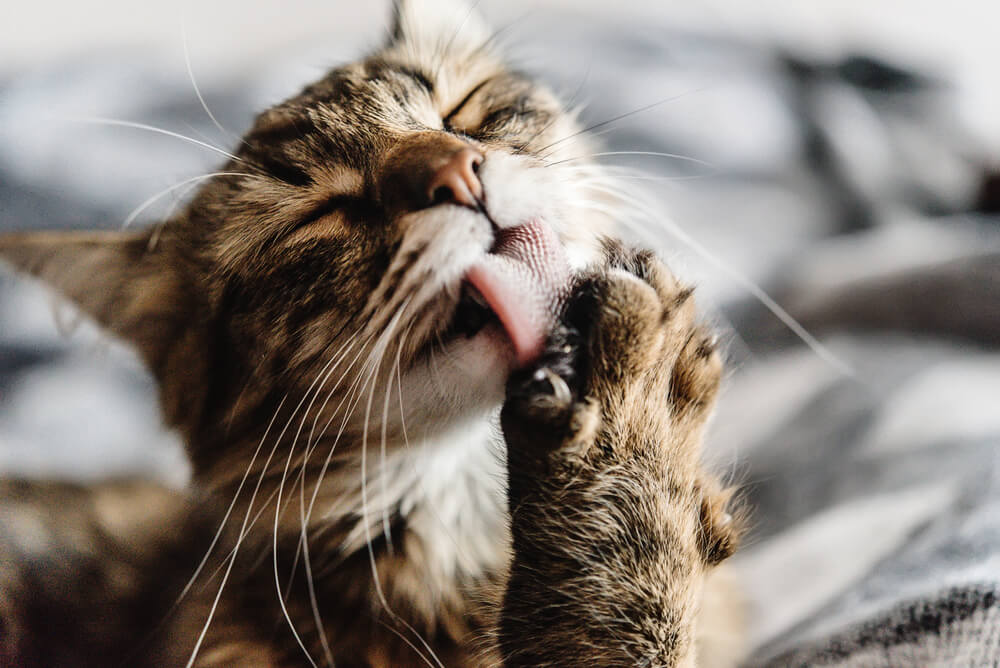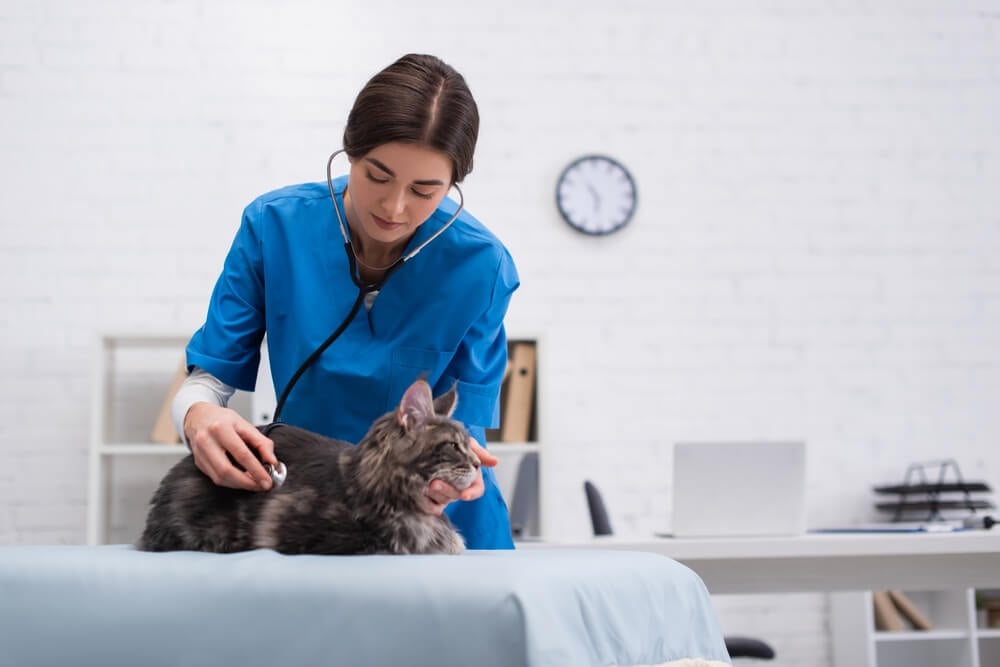
If your cat’s under the weather, you might not be exactly sure what to do or when to take them to the vet to seek professional help.
For most of us, if we’re worried about our cat, our first port of call is Google to look up advice (which may well be how you found this article). But sometimes the search results can contain conflicting — and occasionally unhelpful — information that leaves you none-the-wiser.
So if your cat’s displaying signs of ill health or injury, and you’re worried about them and anxious to provide answers, we’ve put together a guide on how to know when to take your cat to the vet for an appointment.
After all, you know your cat better than anyone else, so you’ll be the one to notice if they start eating less or more food than normal, or any major changes to their routine or behavior.
The importance of regular check-ups
Taking your cat to your vet regularly is key to avoiding any unwelcome health surprises or problems for your cat.
If you ensure they get checked over at least once a year, and every six months as kittens or as they hit old age (10-plus years), you’ll be helping them prevent any long-term health issues. It also provides you with a handy opportunity to discuss any concerns you might have about your cat’s health with your vet.The sooner your cat receives the right medical advice, the more chance they have of making a recovery, so if in doubt, seek your vet’s expertise and advice as soon as you’re concerned.
Signs you should take your cat to the vet immediately
If they’re visibly injured
If your cat is bleeding, has lost patches of fur, is limping, struggling to move or is showing other visible changes to their appearance, you should contact your vet.
Your vet will ensure that any wounds, sprains, fractures, breaks or other injuries are treated properly and will administer antibiotics if appropriate. They’ll also organize follow-up appointments to monitor your cat’s progress.
Increased fatigue
You’ll know if your cat seems more tired and withdrawn than normal. They may sleep for longer, not leaving the comfort of their favorite spot for hours at a time. Their enthusiasm for games may seem less than usual, and they might also lose their appetite.
All of these signs point to increased lethargy and a reluctance to interact, which are signs of a deeper health issue. You may also notice that your cat has taken to hiding around the house, withdrawing to spend time away from everything as they feel unwell.
If you notice your cat’s lethargic, especially if it continues for more than a day or two and is combined with other symptoms such as vomiting or diarrhea, you should contact your vet immediately.
Eaten something toxic
Poisoning is a common reason for vet visits. Whether it’s a toxic food or chemical, if you know they’ve consumed a dangerous substance, or are showing signs that they might have, do not delay in taking them to the vet.
The sooner the vet sees them, the quicker they can use the medication if required to eradicate the contents of your cat’s stomach.
Vomiting for more than two days
Most cat parents are used to cleaning up cat vomit, but if your cat is being regularly sick for a prolonged period of time, it could be a sign of a more serious illness.
Excessive and repeated vomiting for more than two days can not only lead to dehydration but can also indicate that your cat requires urgent medical attention.
Health issues that could cause excessive vomiting can range from intestinal blockages and infection to cancer and liver disease, so contacting your vet quickly in this situation is key to your cat receiving the care and medication they require.
Panting or vocalizing more than normal
If your cat is breathing heavily or panting, you should take them to the vet without delay. In particular, check their tongue and gums — if they’re a pale blue color, it’s a sign they aren’t getting enough oxygen, which is an emergency situation.
Additionally, Ii your cat is mewling, meowing or generally making more noise than usual, especially when you touch them, it’s another sign they’re in pain and should be checked by a vet as quickly as possible.
Drinking more than normal
Excessive thirst can indicate that your cat’s suffering from a medical issue such as diabetes or hyperthyroidism, so if you notice your cat is emptying their water bowl more quickly than usual, or is trying to drink water from other sources, take them to your vet for a check-up and tests.
Diabetes and hyperthyroidism can be treated, but your cat will need the right diagnosis to manage it successfully.
Changes in weight
It’s important to keep an eye on your cat’s weight — whether your cat’s losing or gaining weight. Both can cause health concerns — weight loss can be an indication that your cat’s ill, and weight gain can eventually lead to obesity, arthritis, and conditions such as diabetes.
If your cat’s weight has gone significantly above or below their healthy, average weight, you should take them to your vet so they can work out the root of the problem.
Changes in toilet habits
If your cat’s an indoor cat, it’s easy to notice changes in their toileting. Prolonged diarrhea or constipation are both worth taking note of and contacting your vet if it continues for longer than a day or two, especially if it’s combined with other symptoms on this list.
We uphold the highest editorial standards when creating the authoritative content pet parents rely on and trust.
Every piece of clinical content on the Cat Food Advisor is reviewed by our certified Veterinary Advisory Board, which consists of licensed veterinarians and medically certified specialists.
Our reviews are completely independent; we are not paid by any pet food company to promote their products favorably. We do not accept money, gifts, samples or other incentives in exchange for special consideration. For more information see our Disclaimer & Disclosure page.






